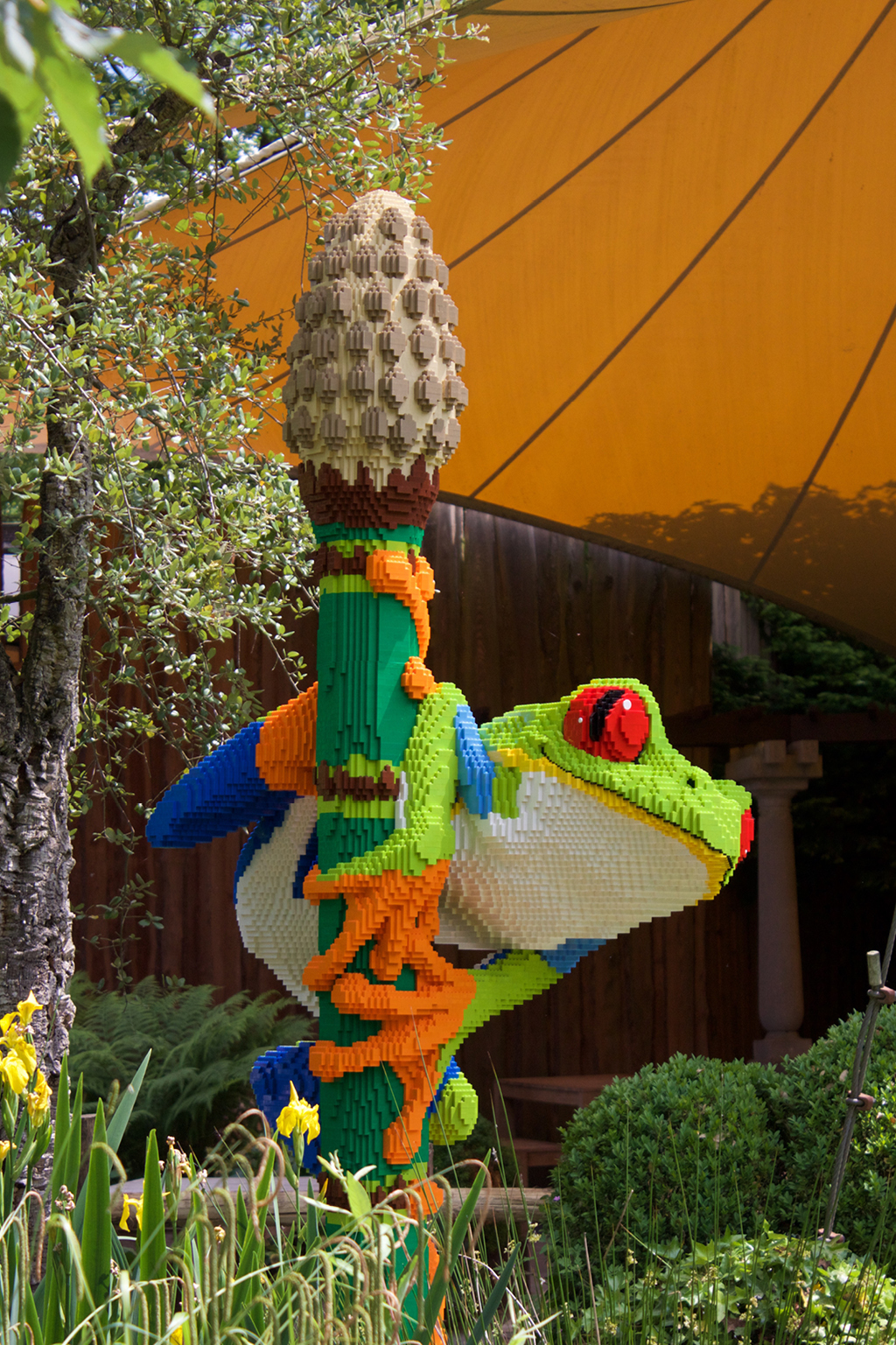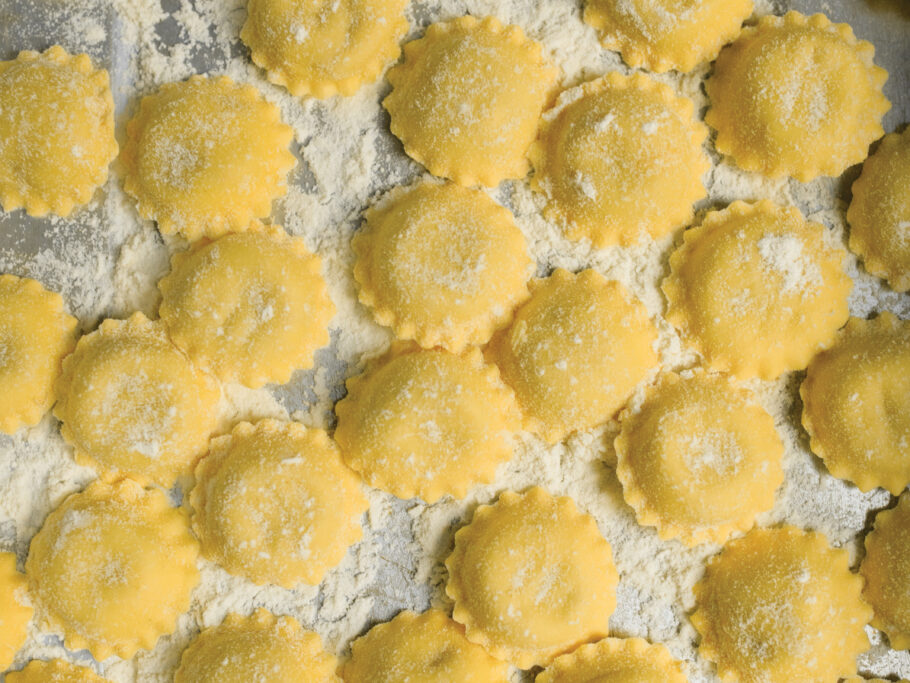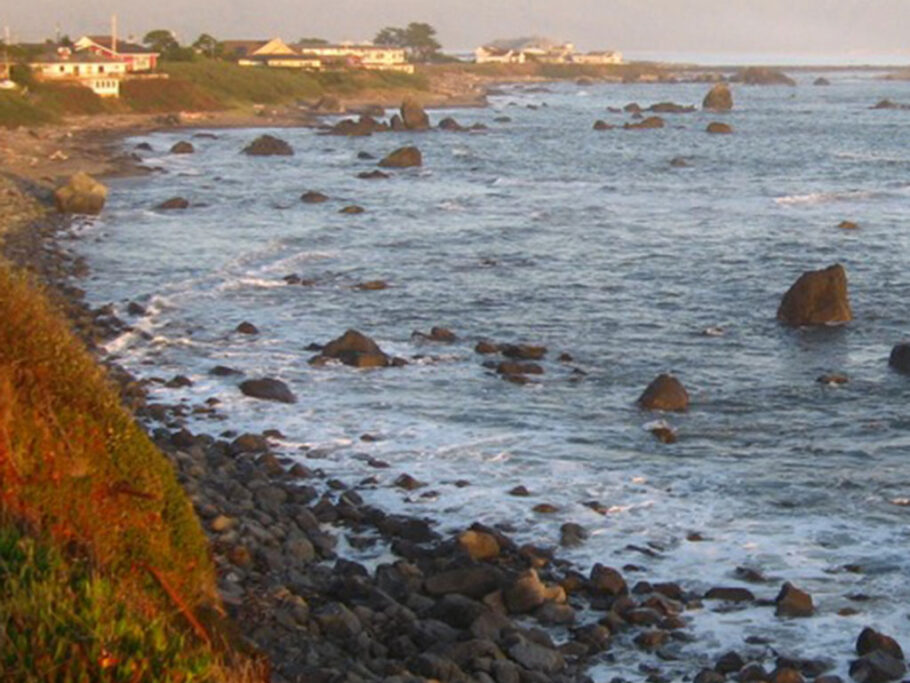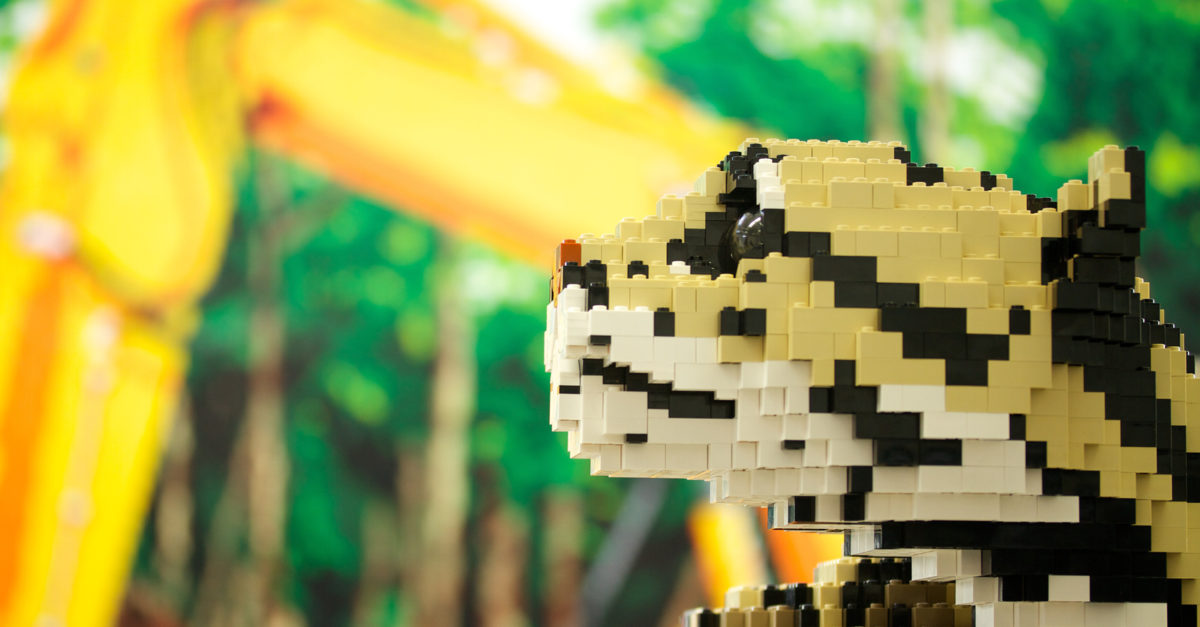Block Party
That’s what life is for artist Sean Kenney, whose colorful LEGO sculptures are displayed around the world.

Have you always enjoyed LEGO bricks?
I’ve been using LEGO bricks my whole life. They were usually the only toys I’d request for my birthday. My models became more elaborate as I got older, and I eventually started building them professionally. Now it’s my full-time career.
What did you do for a living before this? When did you decide to switch careers?
I used to work as a cartoonist, graphic artist, and website designer, and I wore a suit every day. But the whole time, my inner child was itching to get out. Every night after work, I would go home and play with my LEGO toys—sometimes while I was still in my suit!
One day, I was sitting in my office overlooking Park Avenue in New York. I wasn’t working; I was daydreaming about what I would build with LEGO bricks when I got home. At that moment, I realized that I needed to follow my dreams. So I stood up, took off my tie, and walked out—just like that, in the middle of the day. And I’ve never looked back.
What’s your process for creating your sculptures?
Every project starts with lots of old-fashioned LEGO building at my desk. I gather as many photographs and drawings of the subject as I can and use graph paper or a computer model to plan out the basic shape and size. There’s a lot of visualization required, and I often must step back and examine the model from all sides as I’m designing it. I’ll change sections over and over, sometimes making multiple prototypes.
Some of my sculptures are very large and require the help of multiple builders over many months, in which case I use digital design programs and then create schematics for my assistants to follow, much like an architect creating blueprints for construction workers.
How do you protect your projects?
All my sculptures are steel-reinforced, fully glued, and then coated with a special UV-protectant lacquer to protect the plastic from the sun. They’re also bolted to the ground to protect against weather and vandalism.
What LEGO shapes do you use? What’s most challenging about this type of art?
LEGO bricks can be used to create vastly different things, which is always fascinating. When building giant sculptures, I mostly use basic rectangular pieces in very large quantities. Conversely, designing mosaics is like drawing pixel art. And creating architectural scale models is like playtime from childhood; at times, it feels like a completely different medium.
The biggest challenge is to create round, curved shapes with rectangles. But the most complex undertaking is to create people’s faces. Moving just one piece can immediately change a facial expression, so I often need to rebuild a face many times to get the subtlety of the subject just right. I must think ahead as I’m building upward linearly, which is tricky at first; I was once commissioned to build sculptural portraits of two brothers, and it took an entire summer.
Do you have your own workshop? How many pieces do you own? How do you obtain them?
I operate out of a commercial space in the historic city center of Amsterdam. My studio is a big, open area with lots of skylights, high ceilings, and large glass doors for loading and unloading. I keep about a million LEGO pieces in my studio and another twenty million in a warehouse nearby and go through about 250,000 to 400,000 LEGO pieces every year. I purchase them just like everyone else does—the LEGO Group does not sponsor or endorse me or my work. I was the first person LEGO offered to sell to in bulk, but they don’t do that anymore.
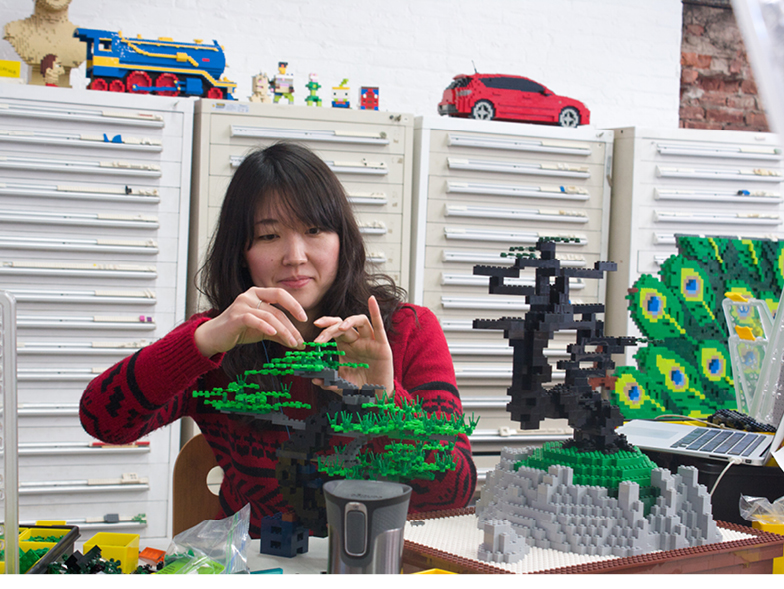
There’s so much attention to detail in your works. What does this mean to you?
I want my creations to have a spark of life, whether it’s hair that looks like it’s blowing in the wind, a creature in flight that looks weightless, or a city full of buildings that feel like tiny people actually live inside them. If I didn’t fuss over the details, my work would feel lifeless and hollow. I want people to be able to connect with it and really believe the illusion.
How many hours do you put into a typical sculpture?
Depending on the size of the sculpture, it can take anywhere from a few weeks to several months. For example, a six-foot sculpture of a plant or animal would easily take a month to design and two more months to physically construct. My largest and most time-consuming piece was Growing Ideas, which took over two years to create. There’s a documentary about it on my website.
What does your family think about all this?
My wife has been very supportive from the beginning. It was difficult (and scary) to decide whether I should pursue this, and she gave me the courage to follow my heart instead of just plodding along doing whatever society told me I was supposed to do.
Of course, my children think I have the coolest job in the world. They are still very young, but I invite them into my studio every now and then to help with something simple. I love being able to involve them in my work. Recently, my daughter helped me brainstorm ideas, and I’m proud to say that I’m now building a giant sculpture that was all her idea!
What are your other favorite sculptures?
One of my favorites is called Back from the Market with Mom. It’s a cartoon sculpture of my family having a great time as they carry groceries using a cargo bike. I am a big proponent of alternative transportation, and when I lived in Brooklyn, I used a three-wheeled cargo bike as my primary means of running errands and taking my children from place to place. In creating this sculpture, I wanted to capture the simple joys of everyday life as a parent while solidifying the image of a cyclist having fun.
In 2017, I created a permanent hanging installation for Target called The Building Blocks of NYC. It’s comprised of 105 individual New York City-themed sculptures built entirely with red and white LEGO pieces and staggered across the main wall of Target’s first Midtown Manhattan store. Each sculpture is held magically in place by hidden clear panels and thin cables. When viewed from the proper angle, the imagery lines up to form the letters “NYC,” symbolizing the idea that the city itself is built upon the myriad individual components that make it come to life. In making this piece, I wanted to address my fellow New Yorkers, so, rather than creating clichéd models of taxis and famous skyscrapers, I included things they’d recognize from their daily lives, including folding chairs from Bryant Park, Alternate Side Parking signs, a Citi Bike, a brownstone, and an Anthora coffee cup.
I’m also particularly fond of my life-sized sculpture Mother Polar Bear and Cubs. When watching polar bears with their cubs, I was taken by how almost human they seemed and saw myself and my kids in it. I hope that by humanizing polar bears, my viewers will relate to them and care about them a bit more and, in the process, perhaps help protect their habitats—and ours.
Where has this adventure taken you? What are your overall thoughts about your journey?
My nature-themed exhibits Nature Connects and Nature POP! have been traveling the globe since 2012, visiting nearly one hundred botanical gardens, arboretums, zoos, and science centers across the United States, Europe, and Asia. More broadly, my work has been in over twenty countries.
I enjoy meeting and befriending people from around the world and immersing myself in their cultures and cities. And, of course, I’ve been able to work with many people at the LEGO Group over the years, including the toy designers and even the CEO and owners. I’ve met so many other talented artists, which is super inspiring, as well as celebrities and even a president! Who knew that my art would take me so far?
For more info, visit seankenney.com
